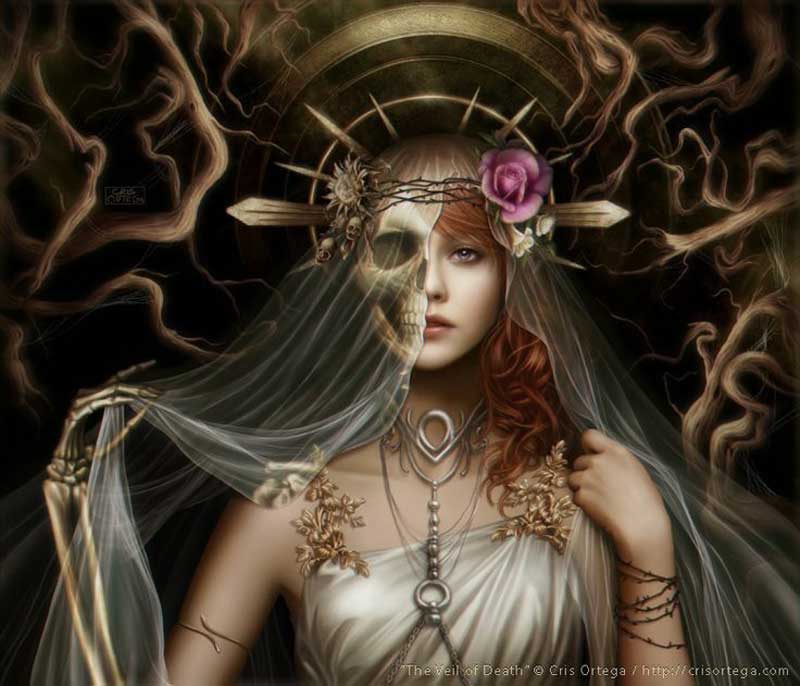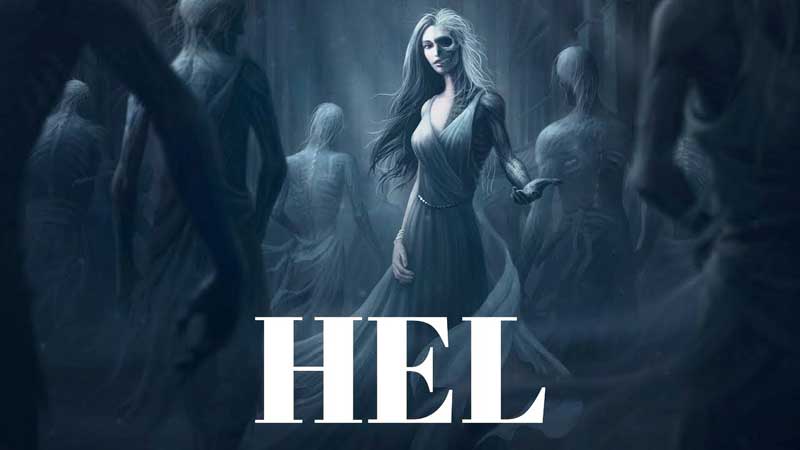
In Norse mythology, Hel is the only daughter of the trickster god Loki and the giantess Angrboda. She is a part of a highly dangerous and disreputable family, which includes her brothers, Fenrir, the wolf and Jörmungandr, the serpent that surrounds the world. According to some versions, Hel was a gruesome sight to behold, as she was born with exposed bones on one half of her body and was often depicted as a half-black and half-white, with a perpetually grim and fierce expression on her face.
Nobody could hide anything from Hel, as she had an eye of fire, which could see the truth. She is generally presented as being rather greedy, harsh, cruel and indifferent to the concerns of both the living and the dead. It is said that she inherited her dark nature from her father Loki, as she finds pleasure in depriving others of their deepest desires.

Hel grew up with Fenrir and Jörmungandr in Jotunheim, the land of the giants, until Odin sent the family to Asgard, where their father came from. However, as the other Norse gods in Asgard were uncomfortable with the uncanny appearance of Hel, Odin sent her away to Niflheim, the World of Darkness, as the queen of the dead.
The Norse believed that with the exception of the warriors, who were killed on the battlefield, most of the other people are destined to go to Niflheim after death. Associated with a hellhound named Garmr, as well as crows, Hel receives the dead at Niflheim, which was divided into several sections. One of the sections was Náströnd, the shore of corpses, where there is a north-facing castle, filled with the venom of serpents. All the murderers, adulterers and perjurers were housed and tormented in the castle, while the dragon Nidhoog would suck blood from their bodies.

When Odin’s son Baldur was killed by a trick of Loki, his soul was also received in Niflheim. However, the gods sent Hermod, another son of Odin, as an emissary to Hel, with a request of retrieving Baldur, as every living thing was in sorrow over the loss of Baldur. But, Hel finds pleasure in depriving others and was not at all willing to give up her prized victim so easily. So she played a cruel trick, when she replied in a taunting way that she would only consent to release Baldur if every last thing in the universe wept for him.
Hermod gladly accepted the condition, as Baldur was loved by all and went around along with the other gods and got almost everything in the cosmos to weep for Baldur, except one giantess, who was probably Loki in disguise, refused. As a result of that one refusal, the condition of Hel’s offer was not fulfilled and it became impossible for Baldur to return to the real world, as Hel kept Baldur in her cold clutches. However, the eventual exposure of Loki ultimately led to a battle between good and evil known as Ragnarok.

Nevertheless, many scholars view Hel as more of a late literary personification of the grave rather than a goddess who was actually worshiped or appeased in her own right. While Hel was feared by the Vikings, the Gauls, Dutch and Germanic peoples were more sympathetic towards her. According to them, Niflheim is not a place of punishment, it is rather a kinder approach to death. It is also considered by many that the expression ‘go to hell’ was originated from the name of the goddess Hel.
